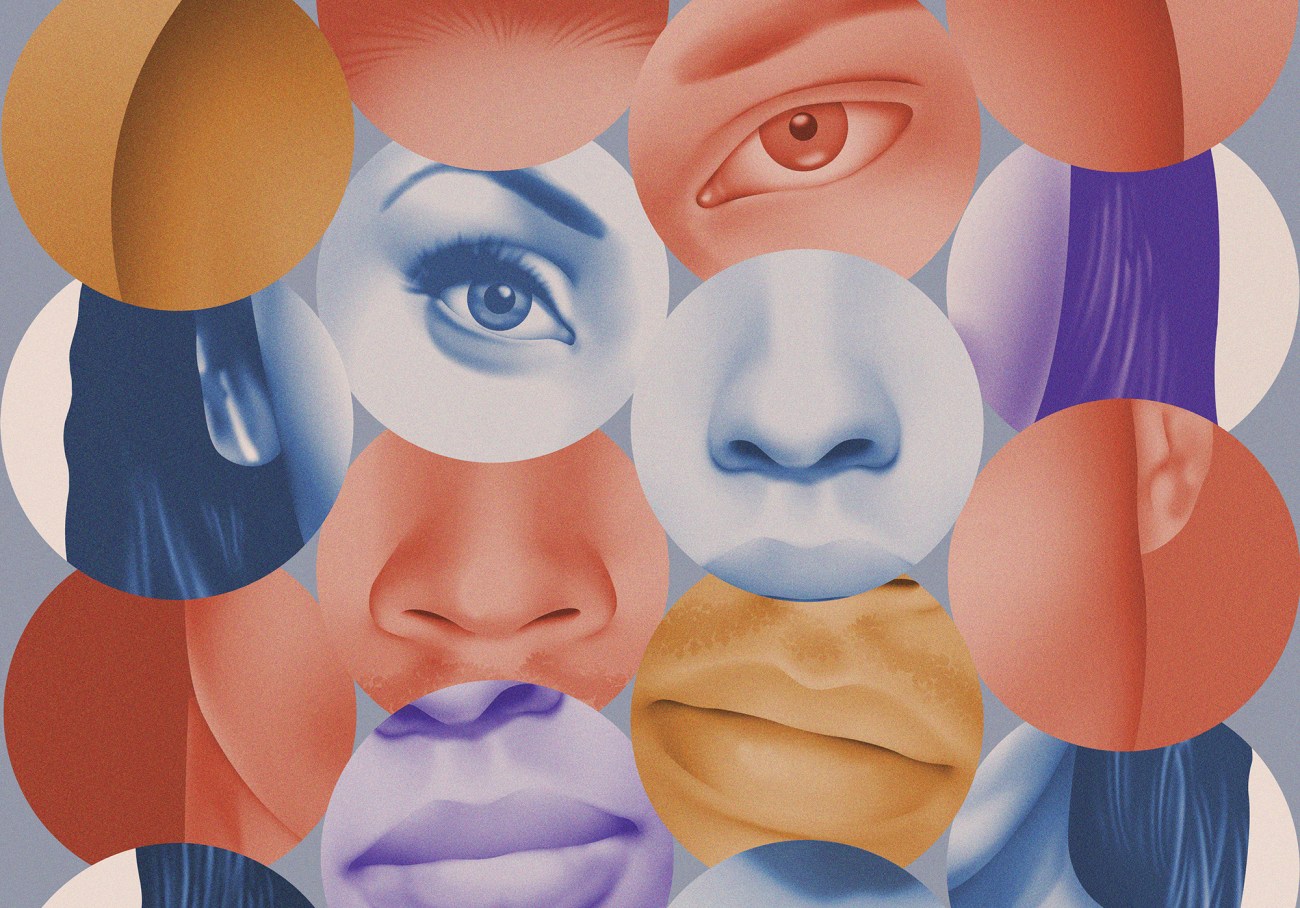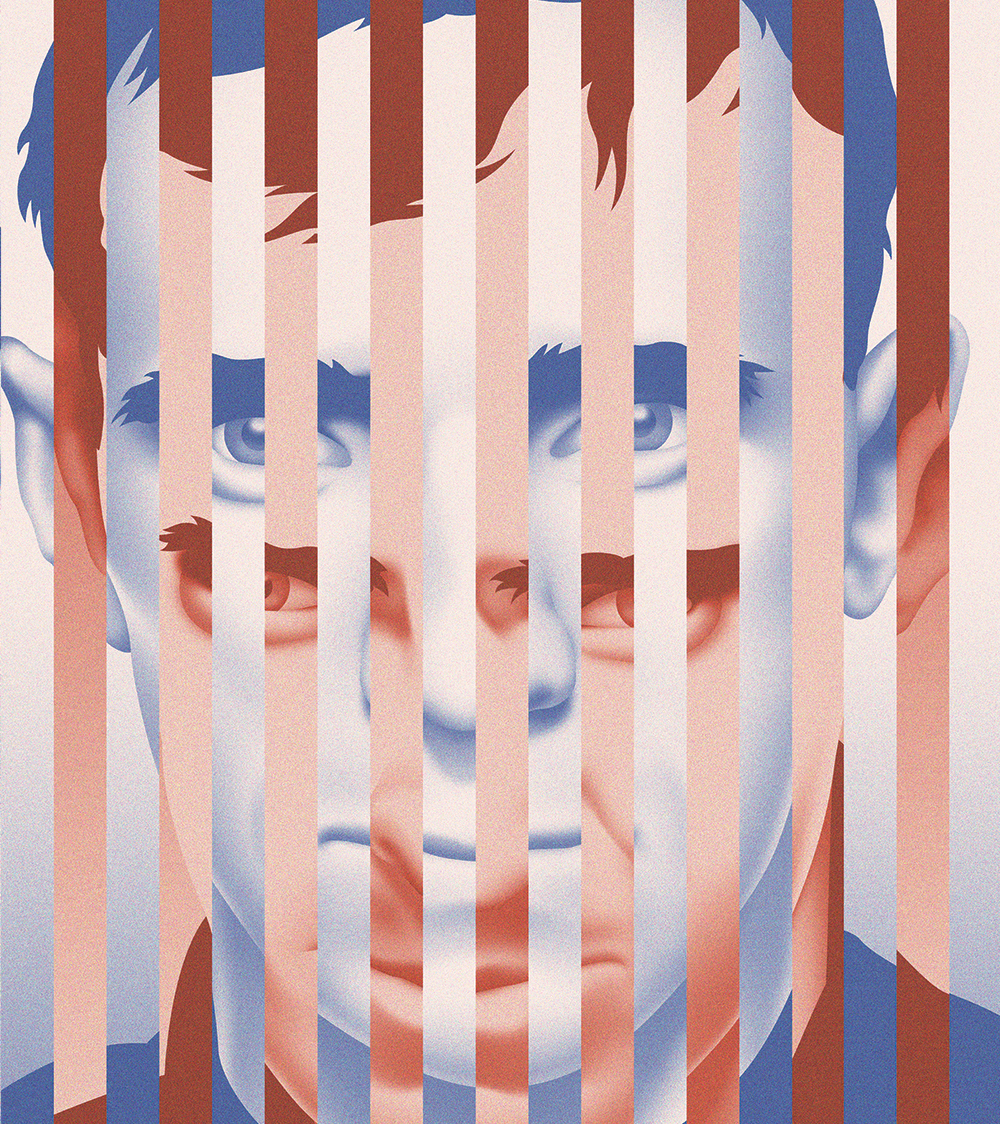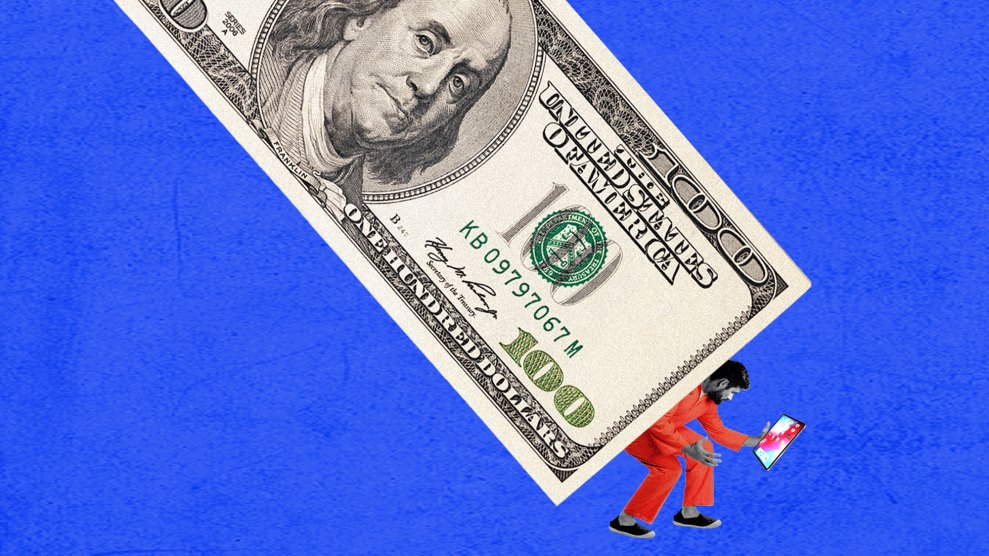Starting in 2017, Thai media published a series of articles on the country’s growing class of “new poor people,” former incarcerees who were finding it almost impossible to get hired and often returning to prison as a result. Criminal records were an obvious barrier to finding a job, observed economics professor Thanee Chaiwat, director of Chulalongkorn University’s Center for Behavioral and Experimental Economics, who had started investigating the pattern. But he wondered whether there was a more insidious bias at play: the applicants’ attractiveness.
Chaiwat tested his theory, sending digitally beautified mugshots and unedited mugshots to 450 companies, alongside questionnaires annotated with variables like salary expectations and career experience. The results blew him away. Employers were substantially more likely to hire the photoshopped applicants for under-the-table jobs, and favored them even more for jobs in the formal economy. The touched-up candidates also received higher salary offers.
His follow-up study included the job seekers’ criminal records alongside photos. Employers once again selected the more attractive applicants (except when they had records of violence and drug offenses). Chaiwat published the data in 2021 in Thailand and the World Economy Journal. His research, he wrote, supported previous economic studies around the globe that found that “more attractive workers are more economically successful” and concluded that “cosmetic surgery [can] provide the positive impact to ex-prisoners’ success of re-entry.”
This suggestion may seem unorthodox. But consider how deeply lookism is entrenched in cultures the world over. In biblical times, people with facial scars, asymmetry, eczema, and other “deformities” were barred from entering the holy temple, lest their presence profane it. This bigotry was a precursor to the physiognomy and phrenology movements of the 18th and 19th centuries, a racist pseudoscience that suggested physical traits like a large nose or prominent brow (traits often associated with people of color) signified “innate criminality.”
Today, the so-called beauty premium begins at birth. Attractive preschoolers get more favorable feedback from their teachers, according to one study. Another concludes teachers also show significant favoritism toward nice-looking elementary schoolers, believing that they’re not only more popular but also more likely to succeed academically. The rewards of pretty privilege are endless: higher salaries at work, bigger tips for service workers, and shorter sentences in the courtroom. People deemed conventionally good-looking are fined less for serious misdemeanors and are less likely to be arrested in the first place. Signifiers of beauty extend well beyond a person’s genetics. Tailored clothes, gleaming hair, glowing skin, and straight teeth—even eyelash length—all contribute to the impression of someone’s overall attractiveness, and all exist beyond an unbreachable wealth gap for many.
Not only do most who enter prison sit low on the socioeconomic ladder, but the trials of imprisonment itself are often reflected on their faces, through scars, gang tattoos, nasal fractures, and broken or pulled teeth. A 2017 study found that facial trauma accounted for a third of trauma-related emergency room visits by incarcerated New Yorkers. After release, former prisoners’ physical appearance contributes to the challenge of reintegration.
But despite the criminal justice reforms sweeping the nation, the role of lookism is largely ignored. To really help people succeed in an appearance-focused world, should cosmetic procedures—at least for things like tattoo removal and nose jobs and tooth veneers—be part of how society prepares prisoners to reenter it?

The historical precedent is vast—and disturbing. Starting in the early 1900s and lasting well into the mid-1990s, face-lifts, chin implants, nose jobs, breast implants, liposuctions, and other cosmetic surgeries regularly took place in jails and prisons across the United States. By 1990, as many as 6,000 incarcerated people received plastic surgery each year.
Initially many of these surgeries stemmed from the aforementioned concept of racial science and eugenics, which conflated certain physical traits with low intelligence, poor health, and criminality. Accordingly, surgeons altered the faces of Black, brown, and Jewish people, reshaping ears, noses, and breasts to correct the so-called “disease” of what some doctors called the “ugliness of nonwhite races.”
That was also the legacy of Dr. Leo Stanley, a eugenicist who became the medical director of California’s San Quentin prison in 1913. With plastic surgery still in its infancy—Stanley had no formal training—he got creative, rebuilding flattened noses with celluloid sourced from toothbrush handles; hammering crooked noses into position with a padded broom and mallet. “Deformed and ugly faces can create despair in their wearers,” he noted.
By the 1950s, the premise that criminality was somehow reflected in a person’s physical appearance had been debunked. Nonetheless, prison plastic surgery persisted. The American Correctional Association updated its manual in 1954 to assert that “elective surgery…[for] especially repulsive facial disfigurements has a definite place in the rehabilitation of prisoners.” In North Carolina, the state’s Vocational Rehabilitation Administration put its federal grants toward a plastic surgery program. “[It’s] the least expensive rehabilitative program we’ve had,” George Randall, North Carolina’s prison director, told reporters in 1963.
Soon sociologists, psychologists, and surgeons devised large-scale research studies, eager to understand the effects of plastic surgery on recidivism. The most well-regarded study, the three-year “Surgical and Social Rehabilitation of Adult Offenders,” took place at Montefiore Hospital in New York starting in 1964, backed by a $364,000 federal grant (equivalent to $3 million today). More than 1,400 incarcerated people applied; those accepted underwent physical and psychological screens. Plastic surgery was performed once they’d been released from jail, with psychological follow-ups scheduled at six months and one year out. The recidivism rate for those who got plastic surgery was lower than for prisoners who did not receive any kind of treatment.
The results from New York lent support to states developing their own programs, and by 1990, 21 states offered some type of surgery. The programs proved very popular—in Michigan, one prisoner reportedly refused parole so as to have a face-lift.
One of the more robust programs predated the New York study and opened in 1954 at the Texas State Penitentiary in Huntsville. Correctional officers used the lure of free procedures to encourage good behavior—only prisoners who accumulated enough “personal incentive points” were eligible for a surgical consultation from doctors in training. For example, in 1984, a 50-year-old incarcerated at Huntsville received a tummy tuck under local anesthetic. “You suffer from seeing yourself in that bad image,” she told her surgeon. “The changing of my physical appearance has helped with my insides. I’ve got a relationship with my two sons I did not have before. This has been a release.”
Many studies showed a drop in recidivism for the surgically altered, though it should be noted that much of this research lacked sufficient controls, had ambiguous results, or otherwise doesn’t comport with current standards. But if the research is correct that looking a certain way does affect recidivism, then from a cost-benefit perspective, an outlay of a couple of thousand dollars to remove gang tattoos, as opposed to a significantly larger annual sum for recidivism—New York City paid $334,000 to imprison someone for a year in 2019—seems a no-brainer.
But public pushback to providing prisoners a beauty benefit that was inaccessible to many, alongside myriad political and ethical considerations, caused these programs to be phased out by the early ’90s. Today, what little plastic surgery remains in corrections is limited to medical necessity—breast reconstruction for cancer patients or gender affirming surgery, for example—and even then, is often hotly contested.
Yet despite the “looks like a criminal” theory being relegated to the halls of junk science, it lives on. And pop culture continues to push that bias. Literature is replete with characters whose antisocial behavior is linked to physical traits, from Victor Hugo’s Quasimodo to William Shakespeare’s “freckled monster” Caliban. Hollywood only strengthened these negative tropes. Walt Disney was particularly egregious. Cinderella’s ugly stepsisters are drawn with lumpy bodies and asymmetrical faces. The Evil Queen in Snow White transforms into a stooped, wrinkled, and toothless hag, and The Lion King’s bad guy is literally named Scar. Bond villains—including No Time to Die’s Lyutsifer Safin—often have facial scars (or metal teeth). “Typically, if you see a scar in a film, that’s gonna be the bad guy,” says dermatologist Dr. Vail Reese.
Given the long shadow of such prejudices, especially in our ever-more-visual culture, some are revisiting the idea of cosmetic surgery for the incarcerated. “Appearance bias, like homophobia, racism, sexism, disablism, classism, and all the other ‘isms’ are forms of social inequality that needlessly lead to individual and social harm,” noted a 2019 book by Bonnie Berry, the director of the Social Problems Research Group, which found that a “very attractive” person is significantly less likely to be arrested than someone considered “very unattractive.”
“To gain employment or for other social advantages,” Berry says, cosmetic surgery is a quicker and more effective way of improving people’s lives than waiting for cultural attitudes to shift. “I like to think that eventually people won’t care anymore about looks,” says Daniel Hamermesh, a beauty economist and editor of IZA World of Labor, a journal that summarizes peer-reviewed research for the general public—but he doesn’t expect it to happen “in my lifetime or yours.”
Of course, not everyone is so focused on the surface level. Lindsey Linder, a former policy attorney for the Texas Criminal Justice Coalition, believes we should focus our energies in other areas: “It’s our responsibility to help people with high needs and build a public health response to the root causes of criminality.”
And while a return to in-prison surgeries is unlikely because of multiple ethical constraints, offering plastic surgery—alongside social services—to people on their way out of prison is being embraced by some nonprofits. In 2012, Vicky Williams, upon her release from Chillicothe Correctional Center in Missouri, where she’d served 32 years for murdering her abusive husband, received an $18,000 makeover, courtesy of the nonprofit Connections to Success. A local surgeon lifted her face and brow, suctioned out her fat, and lasered away her tattoos and varicose veins. “I’ve started accepting myself,” Williams told reporters.
Other programs, like Welcome Smile in Hawaii, furnish formerly incarcerated people with dental crowns and veneers. Survivors of domestic abuse or sex trafficking (which often leads to a criminal record) are eligible for free plastic surgery to repair facial injuries through Face Forward in Los Angeles, Saving Face in Arizona, and the Victims of Domestic Violence Plastic Surgery Foundation, among others.
It’s unfortunate that we live in a world in which going under the knife could be the best way to get a second chance at life. But the ugly truth is it might work. Recognizing and addressing beauty privilege—through surgery, through a shift in societal attitudes, through many means—isn’t giving too much to former offenders; it’s just leveling the field.
This essay was adapted from Killer Looks: The Forgotten History of Plastic Surgery in Prisons (Prometheus Books/Globe Pequot, October 2021).
Correction: An earlier version of this story misstated Bonnie Berry’s job title and mischaracterized her book as a “report.”















